|
This week I've been reflecting on a profound idea: How could you achieve a 2400% change in your business, organization, or life without doing more? At the Business Transitions Summit, a premier event providing business owners with the knowledge and connections necessary for successful business planning, Dr. Benjamin Hardy's talk left a lasting impact. As an Organizational Psychologist, Leadership Trainer, and Author, Dr. Hardy shared the inspiring story of Matt, a property management company owner who set a bold Big Hairy Audacious Goal (BHAG) to increase managed properties from 60 to 500 within just two months. Although Matt's team didn't quite reach 500, they achieved a remarkable 320 and eventually soared to 1,500 within a few months, representing a staggering 2400% change! Having been introduced to BHAGs 15 years prior as a Teach for America teacher, where I learned to set ambitious goals with my students, Dr. Hardy's talk reframed my understanding of BHAGs and their potential to dismantle limiting mindsets and systems that lead to average performance. Key takeaways: 🟩We all have a floor of consistent actions and behaviors 🟩The system - and our routine way of doing things - are designed to defend the status quo (comfort) 🟩To achieve remarkable change, we must consciously shock the old system (discomfort) and design a new one 🟩Use the future to shape the present, not the present to shape the future 🟩Effectively frame the past as an asset, not a liability 🟩Impossible goals break assumptions and mandate creativity 🟩The present doesn't determine the future; our goals do 🟩Give your team goals beyond what they think is impossible & allow space to truly reimagine the present way of doing things (this is harder than it sounds) 🟩Embrace a mindset of continuous learning, unlearning, and rethinking Dr. Hardy’s talk served as a reminder that BHAGs (Big Hairy Audacious Goals) are not just about setting ambitious targets, but also about challenging our assumptions and requiring creative solutions to achieve the extraordinary. It’s not necessarily about doing more, but rather re-examining traditional approaches to achieve unprecedented performance. This involves reassessing outdated methods (most of which are no longer effective) and replacing them with innovative and revolutionary new ways to accomplish what was previously thought impossible. So, what if you made your goals insanely bigger? How would that change your approach and outcomes? To learn more about Dr. Hardy's work on this topic, check out the book “10x Is Easier Than 2x” by Dan Sullivan and Dr. Benjamin Hardy #BHAGs #GoalSetting #BusinessGrowth #Leadership #Innovation  As a former teacher, I have seen the power of technology to enhance and transform the way educators teach and learn. From interactive whiteboards to educational apps, technology has the potential to revolutionize education and better prepare students for the future. That’s why the decision by some school districts to ban ChatGPT — which generates human-like responses to complex questions using artificial intelligence — is deeply concerning. It risks widening the gap between those who can harness the power of this technology and those who cannot, ultimately harming students’ education and career prospects.
In a recent essay titled “The Age of AI Has Begun,” Bill Gates identified the technology behind ChatGPT as one of the two most groundbreaking he has witnessed in his lifetime. Gates believes it will fundamentally reorient entire industries. Researchers at Open AI, the company that created ChatGPT, estimate the technology has the potential to disrupt 19% of U.S. jobs and that four-fifths of American workers could see their jobs affected by chatbots in some way. Among the most vulnerable: translators, writers, public relations representatives, accountants, mathematicians, blockchain engineers and journalists. Already, effective use of ChatGPT is becoming a highly valued skill, impacting workforce demands. A San Francisco-based company is offering salaries of up to $335,000 for engineers skilled in writing prompts — the questions that generate complex responses using this technology. A Japanese company is testing new hires on their ChatGPT proficiency and requiring them to apply it in their work. McKinsey & Company has estimated that between 400 million and 800 million jobs could be lost to automated technology by 2030 — and that was in 2017, before ChatGPT came on the scene. Employees are perceiving a significant shift in their workplaces, and many want training on how to effectively use AI tools such as ChatGPT to perform their jobs. This growing demand for these skills underscores the need for schools to prepare students — especially those in high school — to meet these evolving demands. That’s why banning ChatGPT is a mistake. It would be like prohibiting students from learning how to use laptops and calculators. To fully utilize ChatGPT’s capabilities, users must create thoughtful prompts, review the output, refine their requests, provide feedback to the chatbot and then have it integrate their ideas to produce the desired insight or product. Students must employ essential skills such as reason, logic, writing, reading comprehension, critical thinking, creativity and subject knowledge across various topics to engage a generative AI technology effectively. They must also learn to recognize its limitations and propensities for error. Banning ChatGPT in classrooms risks creating a division between students who learn how to utilize its capabilities and those who are left behind. Preparing students for the demands of the 21st century will take a comprehensive approach. To achieve this, the federal government can require high schools to assess AI proficiency within their existing English Language Arts and math exams. This approach can motivate states to redesign their K-12 curricular standards, which influence what students learn daily. State agencies must lead the way in integrating generative AI technologies into their K-12 standards, investing in educator training and developing effective curriculum materials. Washington should incentivize and fund these efforts. Businesses must recognize the importance of preparing their future workforce and encourage state education officials to incorporate technologies like ChatGPT into learning standards. Philanthropic organizations can partner with school districts to create pilot programs demonstrating successful AI tool integration, inspiring state agencies to prioritize and fund this work. Advocacy is also crucial to the success of these efforts. Parents must urge their children’s schools to teach AI technology, and teachers should insist on adequate training to become proficient in them. Collaboration among educators and families is essential for students to acquire the necessary tools and skills to thrive in an AI-driven world. Whether schools embrace it or not, generative AI technology will transform how students access information and learn. Other countries are paying attention. Singapore is already introducing AI-driven support systems for students and teachers. The United Arab Emirates aims to provide AI training to one-third of its annual STEM graduates, and the United Kingdom — in its effort to become a leading global AI superpower — has set a goal of producing 1,000 AI-focused Ph.D.s over five years. In this new, AI-driven world, success will belong to those who possess the skills to navigate it effectively. To equip students for an ever-changing technological landscape, K-12 and higher education must adopt generative AI technologies like ChatGPT. In doing so, they can foster a well-educated and skilled workforce, encourage innovation and build a brighter future for everyone. Andy Canales is a former teacher and education executive pursuing an MBA at the MIT Sloan School of Management. He taught fifth- and sixth-grade world history in Miami and New York City. This op-ed was published on the 74, a non-profit, independent news organization focused on education in America. How Can We Reclaim Educational Equity in Texas? Latino Educators Came Together to Find Out.11/2/2021
Andy Canales and Sandra Rodriguez
Last month, Latinos for Education convened nearly 200 educators, state legislators, and community members from across Texas at our State of Latino Education Summit. With an increase of over 800,000 Latino students since 2005 in the Lone Star state, we came together with the belief that Latino students will shape the future of Texas, and the collective goal to work together to reclaim educational equity for Latino students and their families.
While the growth in the number of Latino students in Texas is significant, we know there’s significant variation in performance, access, and equity in the schools that are majority Latino and majority low-income. On average, only 56% of schools in Texas that are majority Latino and low-income earned an “A” or “B” in the last set of school ratings in 2019. Some major regions in Texas had as few as only 28% of their Latino low-income schools earn a high rating. The COVID-19 pandemic exacerbated both the academic and non-academic challenges Latino students faced before the pandemic, especially those growing up in low-income households. Many students had to drop out of school to help support their families, and those who were able to stay in school may lack access to technology and essential resources. Additionally, our COVID-19 report from last year highlighted that nearly half of Latino parents in Houston are concerned about their children’s mental health. While these challenges are devastating for many in our community, they present opportunities to reimagine the type of education that our students are accessing. During our summit, Superintendents Millard House II of Houston ISD, Dr. Michael Hinojosa of Dallas ISD, and Dr. Sylvia Rios of Laredo ISD presented their strategies to support students during this difficult time.
Dr. Hinojosa directed Dallas Independent School District (DISD) to focus on learning acceleration, not simply learning loss, and providing “fragile schools” more resources and extracurricular activities that integrate learning, including in the summer months. Additionally, Dr. Hinojosa emphasized that talent matters, and that we must continue to focus on sending the best teachers to struggling schools. Lastly, DISD eliminated suspensions that disproportionately punish African American male students and hired almost 60 mental health professionals to help the schools with the greatest need.
Dr. Sylvia Rios underscored how Laredo ISD provides parents and families with classes to help them support their children, including GED and ESL support classes. Laredo ISD emphasizes the importance of a bilingual education, with the understanding that the Latino community is diverse, and school systems need to use different strategies to engage Latino families with different backgrounds. In Houston, Houston Independent School District (HISD) Superintendent Millard House II, highlighted the importance of creating systems and processes that provide a voice to families, students, and the broader community. House also emphasized that programs such as “Grow Your Own” are critical in offering the kind of biliteracy that HISD needs and providing nonacademic resources and wrap-around specialists to students and families that are in-need. In addition to hearing from Superintendents leading majority-Latino school districts, the summit featured a Spanish-language panel that explored the importance of family engagement in a child’s education. Panelists, which included HISD Trustee Judith Cuz, Executive Officer for Student Support Services Candice Castillo, and former HISD principal, encouraged families to stay engaged in their child’s education and provided attendees with best practices on how families can get and stay involved. We know that families are a child’s best advocate, and if they are not empowered to speak up and take action, nothing will change for Latino students. At the State of Latino Education Summit, we were able to come together to reimagine an education system that is truly equitable for all students in the Lone Star state. Educators, state leaders, and attendees showed up to voice their commitment to supporting Latino students and their families in Texas because together we can make a real difference in their lives both inside and outside of the classroom. —————-- Andy Canales is the Executive Director, Texas at Latinos for Education. Previously, Andy worked in education as a teacher and nonprofit director. He serves on the Board of Directors of the Buffalo Bayou Partnership, TEACH, UHD College of Humanities and Social Sciences, and the Latino Texas PAC. He’s a Senior American Leadership Forum Fellow, a Leadership ISD Fellow, and a Houston Business Journal 40 under 40 honoree. As the son of Salvadoran immigrants and first-generation college graduate, Andy is passionate about expanding educational equity. Sandra Rodríguez is the Advocacy Director at Latinos for Education where she leads the organization’s efforts to elevate Latino voices in decision making to increase educational outcomes. She previously served in the Houston Mayor’s Anti-Gang Office and Houston Health Department overseeing program planning. She obtained her bachelor’s from Springfield College School of Human Services as a single mother and currently serves as the President of the Gulfton Super Neighborhood Council, is a Fellow of the American Leadership Forum Class XLVIII, and is a member of the National Forum for Black Public Administrators. The recent surge in COVID-19 makes it unlikely many kids will be able to return to schools in the Fall, businesses are closing and guardians are continuing to get laid off. I want to get our parents back to work by helping kids succeed during virtual learning. Franklin D. Roosevelt’s New Deal pulled us out of the Great Depression through an intense overhaul of American infrastructure. Today, we don’t need physical infrastructure – we need virtual infrastructure for our schools and socio-emotional infrastructure for our students. The New Deal in the time of COVID-19 should focus on investing in the hearts and minds of children.
Every U.S. entity, from individuals to government, corporations, small businesses, and nonprofits, has a role to play. If we plan as a nation and work together, the whole of what we create will be so much greater than the sum of the parts. In an effort to eat the apple one bite at a time, let’s break down how we can do this using the three R’s that made the New Deal famous and lasting. Relief: We need to help our students by employing their parents and neighbors who have been laid off. There are thousands of unemployed software developers, translators, audiovisual experts, graphic designers, counselors, customer service representatives and more who all have the skills necessary to set up a national virtual educational support infrastructure, helping our students keep up with coursework and prevent the COVID-19 version of the summer slide. There are more than 13,000 school districts in the United States, but we don’t need each of them to create a small infrastructure plan while also dealing with the problems of today and tomorrow. Instead, we need the federal government. Every one of us should call our federal representatives and ask them to allocate money for a Virtual New Deal in the next relief bill so we can begin creating and staffing this much-needed plan. Recovery: It will take time to get this Virtual New Deal functioning. While that’s happening on a federal path, we, as individuals, business owners, and community leaders can serve as a virtual volunteer corps in our own communities. Almost every skill or resource we have can help students and families during this pandemic, but here are a few that I think will make a big impact. Nationally, 35% of fourth-grade public school students are proficient in reading. What if we created a volunteer corps of everyday Americans that could volunteer to read to children virtually every day and engage them in what they are learning? Small business owners who find themselves with unused tech equipment as a result of teleworking can lend it to local schools, nonprofit organizations, or families to help with education. While small businesses can donate individual items or hours here and there, corporations can do this on a larger scale, providing resources, discounting software, or allowing employees to volunteer as needed during the workday. Bilingual community members can offer translation services to help ensure all students and guardians have access to identical supports and materials, or they could act as bilingual intermediaries between guardians and the school system. They can also conduct emotional well-being check-ins for households of various backgrounds; those few moments on the phone can help provide peace of mind to students and parents or even uncover issues at home that teachers didn’t know about. Reform: This is where the two come together – an infrastructure that connects those who have with those who need. A year ago, many of us would not have believed a shutdown of this magnitude could or would happen. Now that we’ve experienced it, we’ve seen what our school systems have done properly with the limited time they had, but we also see what could improve. As Houston Executive Director at Latinos for Education, I have a front-row seat to the incredible untapped intellectual capital that can help our schools, educators, students and families if we have systems in place to leverage those interested parties. How do we get wireless internet to families that don’t have it? What media partners can we call on to produce educational videos for PBS? what technology companies can help ensure students and families can speak securely with school counselors? What hotlines or online registrations can we put in place so a helper in Nebraska can assist a struggling parent in Texas? The list goes on. Whether it be the current resurgence of COVID-19 or a natural disaster, there will be another reason for us to strengthen our virtual infrastructure, so we need to be ready. When my parents – a housekeeper and a mechanic – saved enough money to buy a home, they had no idea that decision would lead me to one of the worst performing middle schools in Los Angeles. Had they bought a house just a few blocks away, I would have been zoned to one of the best performing schools in the county. I excelled in elementary school and was afraid that I would not be able to fully realize my academic potential by attending a low-performing school. In a desperate attempt to salvage my education, my mom and I arranged a meeting with the principal at the high-performing school to try to convince him to allow me into his school. At the meeting, my mom made her case in Spanish to the principal while struggling not to break down crying: “Solamente quiero que tenga una buena educacion.” I quickly translated her plea: “My mom says she just wants me to have a good education.” It was quite the tearjerker moment but, unfortunately, tears only went so far. I’ll never forget the principal turning us away saying, “I’m really sorry. I wish I could help, but you’re not zoned to this school, and there’s nothing I can do about that.” I then attended a middle school where I fell further behind academically. Untapped potential. Fortunately, I then went to a high school where outstanding teachers helped me get on a path to college. I’m passionate about data because of its potential to shine a light on the inequities I experienced firsthand and because of its ability to begin a conversation about solutions for kids facing similar challenges to those I had to overcome. While data may not tell the whole story about a school, it helps depict a snapshot of the conditions and outcomes children experience every day. The Texas Education Agency (TEA) released their 2019 A-F ratings assigning most schools in Texas with a letter grade. There’s much we can begin to learn from this publicly available information:
What’s striking to me about this data is the untapped potential it highlights: If Latino low-income schools in the Rio Grande Valley are succeeding, why can’t more of our schools elsewhere in Texas succeed similarly? When I see these numbers, I imagine a story – like mine growing up – of a child behind every number. A story of untapped potential. Latino students – even while growing up economically disadvantaged – can succeed, but they need us to provide them excellent schools. Through the following scatter plot, we can see the wide variation in performance among majority-Latino and majority-economically disadvantaged schools across Texas: There are nearly 1,000 schools in that red box earning a top grade in the TEA ratings (80-100). Who’s attending these schools? Latino students who are economically disadvantaged. What makes them different? How are they able to tap into their students’ potential?
While there are bright spots, the variation in performance reaffirms our children can succeed when the right systems are in place, and there’s more that we can do to help Latino children growing up in poverty.
Only 1 in 4 schools in Texas that is majority-black and majority-economically disadvantaged earned an “A” or “B” compared to 2 in 4 Latino-majority and majority-economically disadvantaged schools. No community and group of children are the same. If we are to improve our schools to more equitably serve our students, we have to take into account the rich diversity our students represent otherwise a one size fits all approach will have limited success.
Behind every number, there’s a rich and complex story. Often, a story of the incredible potential our students reflect on a daily basis. Throughout the data, we see numerous shining examples of students and schools outperforming even in difficult circumstances. The data shows our kids can succeed – and they are succeeding. It’s incumbent upon us – the adults – to create a fairer system that gives all of our children the opportunity to fully realize their potential. Everything is bigger in Texas – including our demographic shifts: Since 2005 there has been an increase of 800,000 Latino children in the Texas public educational system, bringing the total number of Latino students to three million. For comparison, the 800,000 additional Latino students alone represent a student population that is larger than the independent populations of Alaska, North Dakota, Vermont, Wyoming, and Washington, D.C. In Greater Houston, Latino children make up half of the student population across 50 school districts. Texas’ future will be defined by the success our children achieve, and if Latino children succeed, Texas will succeed. Despite our best efforts, we’re falling short on this front. Across Texas, only 11% of Latino students are graduating college-ready. So, what will it take to accelerate Latino student success? The good news is that throughout Texas there are schools that are majority-Latino and majority low-income that are performing very well and there's a lot we can learn from these schools. In the recent A-F ratings released by the Texas Education Agency (TEA), 74% of Latino majority/low-income majority-schools in the Rio Grande Valley (RGV) earned an "A" or "B" grade. This stands in stark contrast with clusters of schools with similar demographics in other regions (as defined by TEA). Region 1: Edinburg (Rio Grande Valley) stands out. There are over 400,000 students in Region 1 with 500+ schools that are majority Latino and majority low-income. Looking at the top fifteen school districts (in size) in Region 1, you can see a combination of both traditional and charter school districts doing well with majority Latino/majority low-income schools: The Latino community is very diverse, so we can't assume that what works in the Rio Grande Valley (RGV) will automatically work anywhere else; however, I think there's a lot we can learn from the success of these schools in the RGV.
There's only so much you can learn from the data and every number represents a student, a school, a family, and a community - each reflecting a complex reality. If I had a magic wand, here are the questions I'd want to explore further to learn more about the RGV:
|
Andy CanalesPassionate education leader and entrepreneur. Son of Salvadoran immigrants & first generation college graduate. Archives
May 2024
Categories
All
|
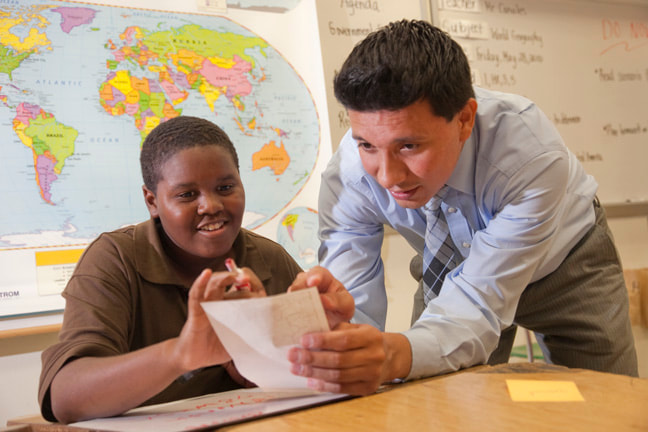





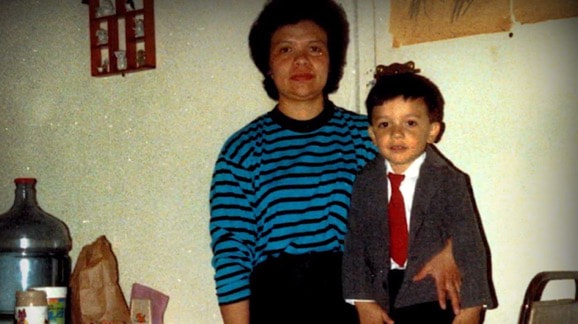
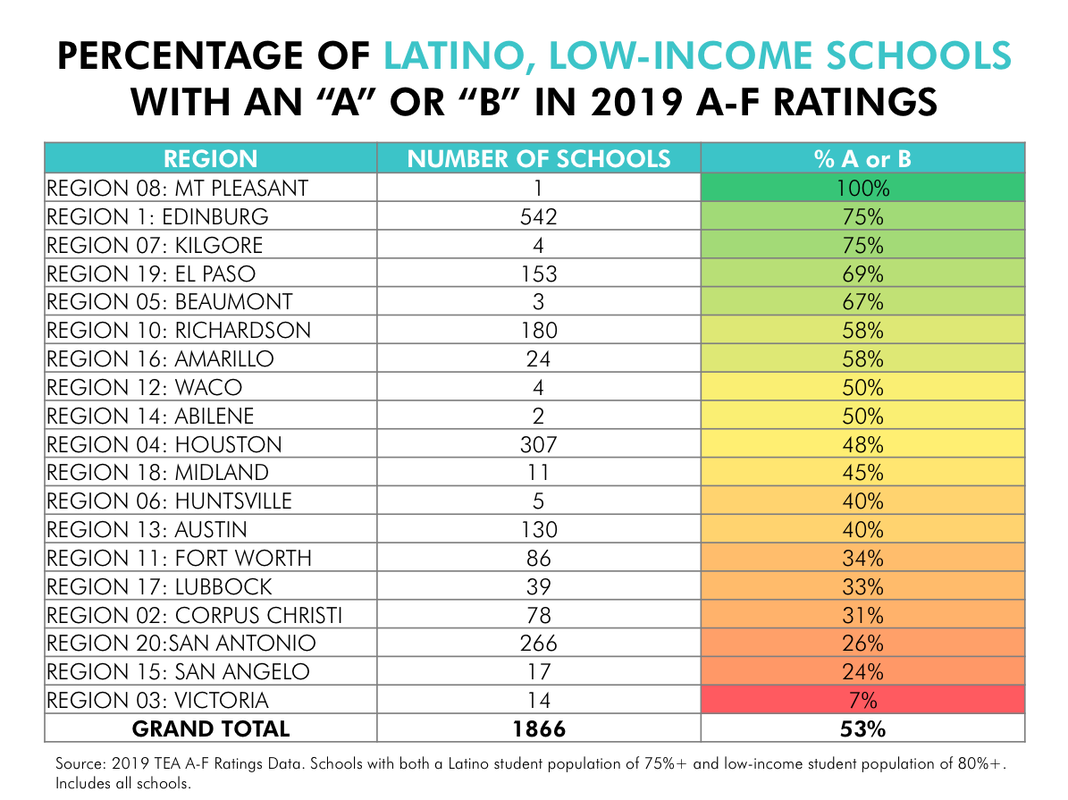
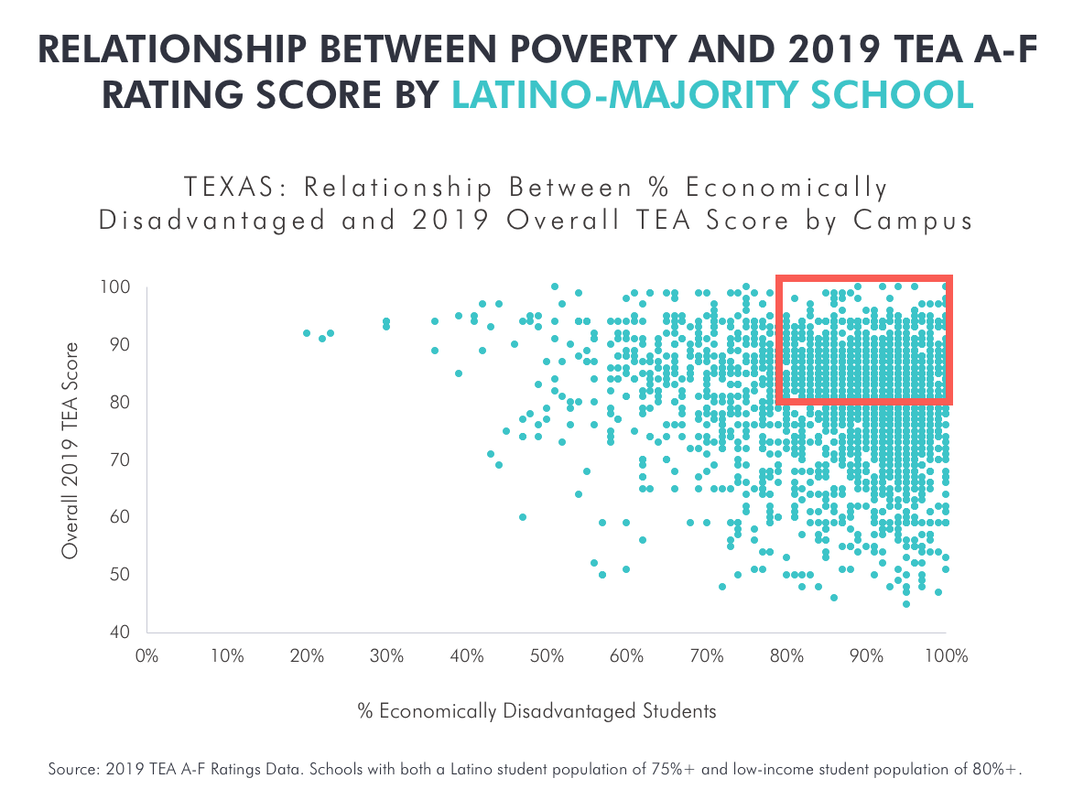
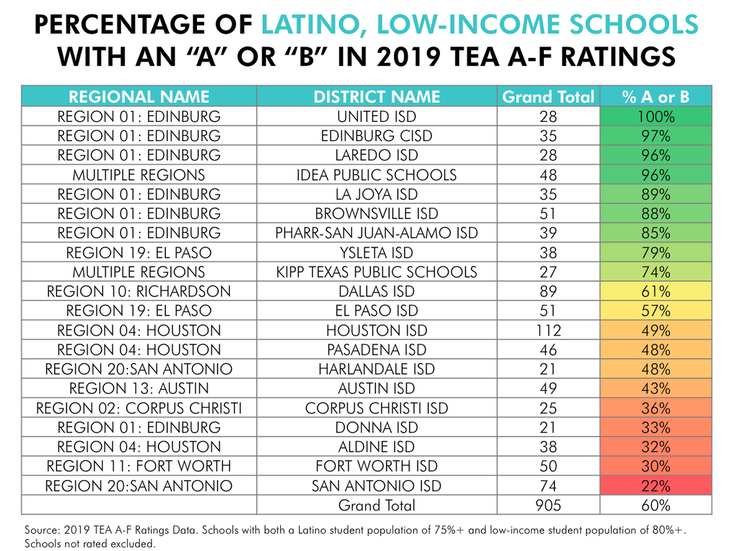
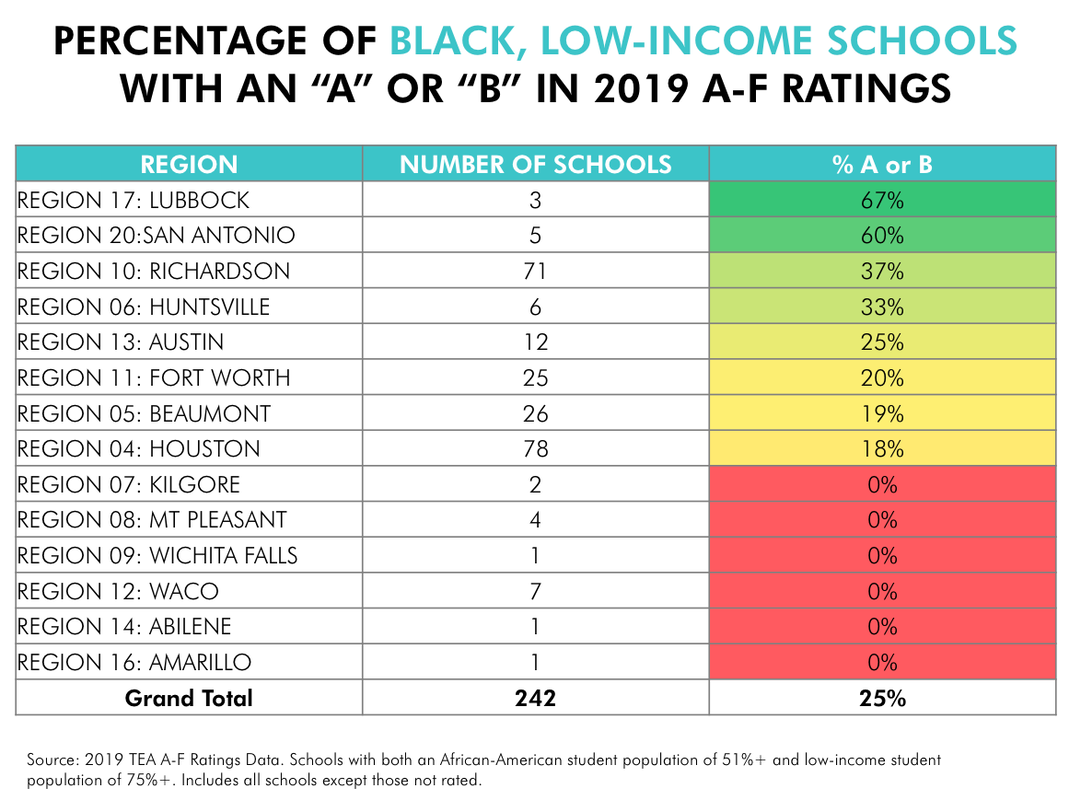
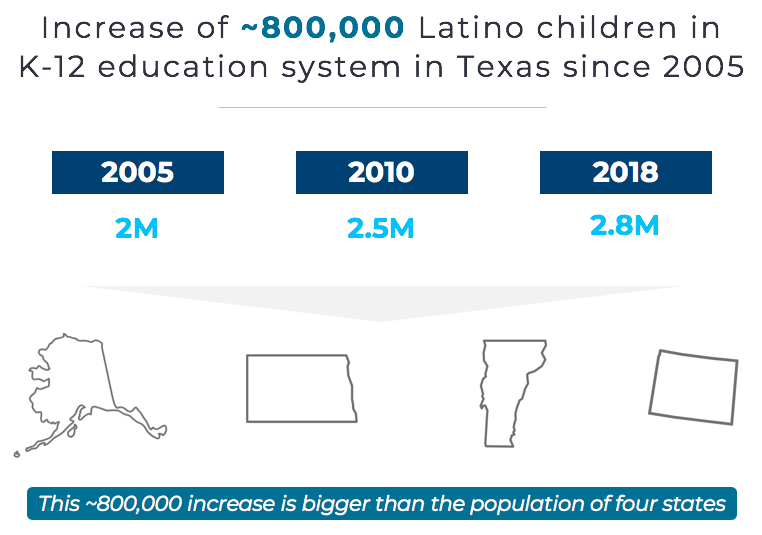
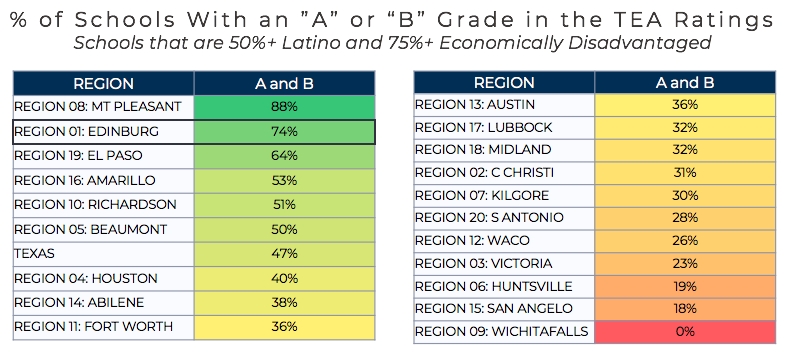
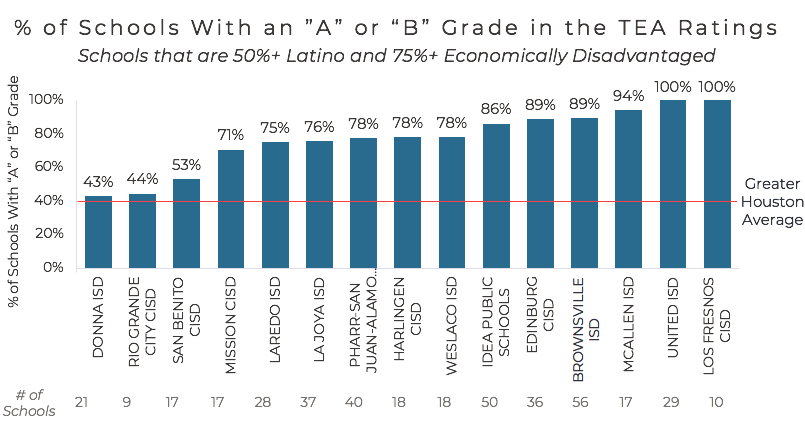
 RSS Feed
RSS Feed